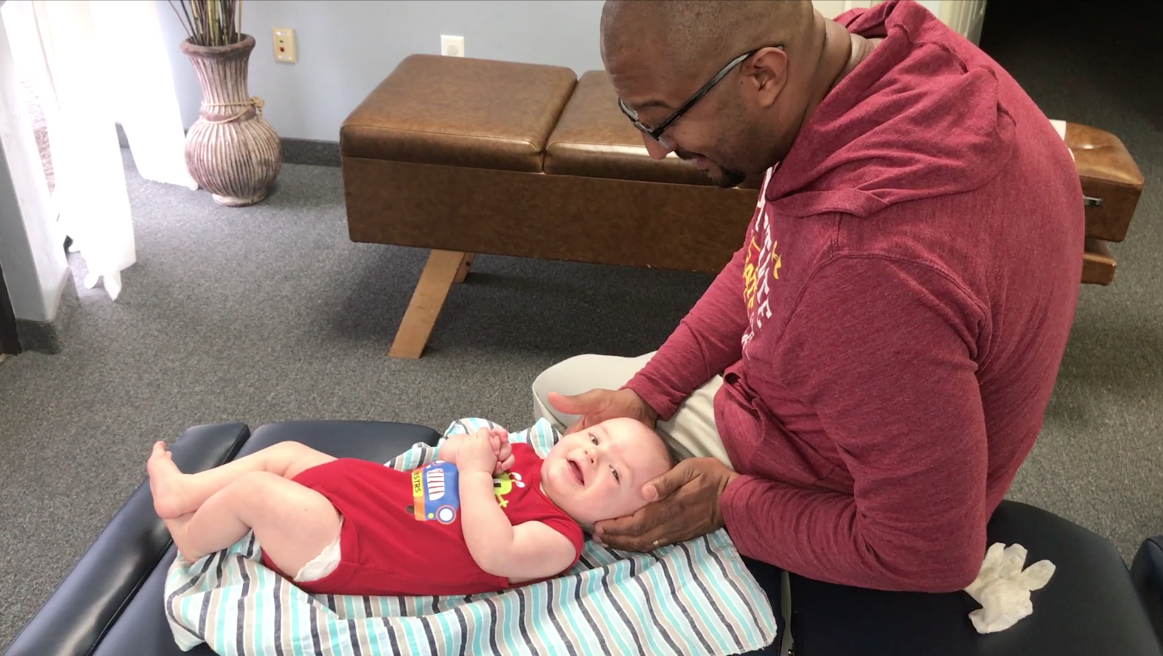
 If your baby’s head seems to be stuck over to one side, your baby could have Torticollis.
If your baby’s head seems to be stuck over to one side, your baby could have Torticollis.
Have you ever felt stiff neck or neck pain after having a bad night’s sleep? And that it’s painful to turn your head to one side? This is a condition called torticollis. And this thing can happen to newborns, which can create problems with the baby. Watch the video to know more about Torticollis, including how to treat it:

What You Need to Know About Torticollis
An uncomfortable positioning in the womb or after difficult childbirth can result in Torticollis. And it can get better with simple position changes or stretching exercises. But for some, this is a condition that can last for a long time and create problems like cranial imbalances.
So how does the baby get torticollis?
There’s a muscle called the Sternocleidomastoid muscle in the side of our necks. For babies, this muscle can get really tight during their first few weeks of life, which can lead to torticollis. And this can be difficult for the baby when nursing, feeding and sleeping.
Does torticollis affect the spine?
Absolutely. Torticollis can create spinal misalignments because that SCM muscle connects to the spine, skull, and collarbones. They can also move the upper cervical vertebra out of position.
And this isn’t going to change until specific corrective adjustments are applied. If left unchecked, Torticollis can cause developmental delays, as it can restrict the baby’s range of motion and limit head control. This will in turn affect their ability to meet milestones such as sitting up without support, crawling, or self-feeding. Missing these milestones can also lead to muscle imbalances and a loss of motor coordination.
So how does a chiropractor treat Torticollis?
Chiropractic management is directed at reducing cervical spine subluxations. Those are misalignments in the upper part of the neck. Treatment includes spinal adjustments, cranial, realignment, and different kinds of soft tissue therapies.
And although infants are different, Torticollis can usually be treated in three to six chiropractic sessions. But regular treatments can also help patients avoid developing conditions like it, and produce a rapid solution.
Are there exercises for torticollis?
Below are a few examples of exercises that can help a baby with torticollis. For a full demonstration, watch the video: https://youtu.be/Y07i-IK6vl0
- The cranial draw motion. You slightly tuck the baby’s chin and then extend the head. Repeat that 5 times and hold for 20 seconds. This exercise is going to stretch out some of those tight neck muscles that can cause torticollis.
- Holding the baby’s head gently and stretching it in a side-to-side motion. You can also use the other hand to support the opposite shoulder. Then gently push the opposite sides of the head slowly. Over time, you’re going to increase the baby’s range of motion in their cervical spine and helping with that torticollis.
- Mirror image types of exercises. If the baby’s head is stuck over in one position, gently stretch to the opposite direction. And as you pull, you may notice that baby starts to resist a little bit and you just hang out there for a moment. Let the baby resist. And then when the baby starts to relax, you pull again some more. And when you do that over time, you’ll work on stretching out that muscle.
- Rotation. So if the baby’s head is shifted over to the right-hand side, we stretch to the left. And then we turn to the right. Both of those motions are going to be more challenging for baby.
Is chiropractic care safe for babies?
 Chiropractic care is incredibly safe for infants. Pediatric chiropractors are specially trained to provide incredibly safe, gentle care for infants. (Check out baby’s first visit to chiropractor.)
Chiropractic care is incredibly safe for infants. Pediatric chiropractors are specially trained to provide incredibly safe, gentle care for infants. (Check out baby’s first visit to chiropractor.)
They use gentle adjustments and treatments that are appropriate for a baby’s body to accomplish the best results. If your baby is dealing with torticollis, click the link to schedule an evaluation: tompkinschiropractic.com/schedule
We’ll be happy to evaluate any concerns you may have and come up with a plan for treatment. This could include adjustments in our office or exercises at home that help you achieve the best possible results for your infant.
See also: 5 Benefits of Chiropractic Adjustment During Pregnancy
Check out this article: 5 Reasons Your Child Needs Chiropractic Care

